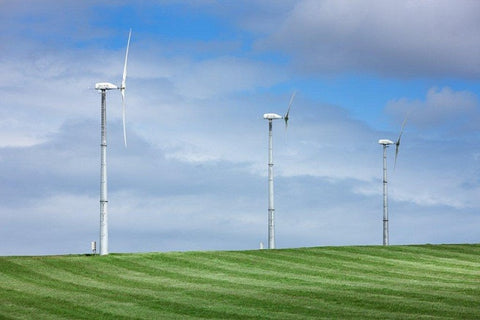Making Small-Scale Wind Power More Competitive with WindLogger
Making Small-Scale Wind Power More Competitive with WindLogger
Wind power is an exact science, and carrying out a detailed feasibility analysis can make the difference between a project that is lucrative and one that fails to produce the required energy output. WindLogger offers an affordable wind measurement solution for small and medium-scale projects.
Utility-scale wind farms involve considerable investments and multiple stakeholders, which means budget is not an issue when carrying out feasibility studies. In fact, such a study is directly requested by investors, who want to make sure their capital will yield the expected return.
However, the situation is different for small-scale wind projects with fewer turbines or just a single turbine. A site assessment is required nevertheless, but in these cases its cost represents a higher percentage of the total investment, and project owners are not always able or willing to afford it. As a result, small and medium-scale wind projects are often evaluated based on wind maps or measurements from nearby airports and weather stations, but this approach has many pitfalls:
- Measurements come from a nearby source, but they are not exact measurements for the project site. At best, these sources are a rough estimate of site conditions.
- Site features such as terrain elevation differences, vegetation and constructions can alter wind patterns. Sometimes the effects induced are favourable for wind power, but they can also be detrimental.
- With general weather data is not possible to pinpoint the exact location in which a wind turbine will yield maximum power output.
There is one key mathematical relationship: wind power is proportional to wind speed cubed. This means that if two identical turbines are installed at different sites, but one site has twice the wind speed of the other one, the turbine installed there will produce four times as much power. Consider the following examples:
- If wind speed at a project site is only 90% of the expected value, wind turbine output drops to around 81%.
- Even if the project site has the expected wind speed, there could be specific locations where the wind speeds up. For example, a 15% increase in wind speed translates into a 32% increase in turbine power output.
WindLogger technology allows wind measurement and analysis to be carried out at an affordable price, even in small single-turbine projects. For the price of £429, our clients can get a reliable and rugged wind measurement kit that includes a wind vane and an anemometer, and there is a two-anemometer version for £499, capable of measuring more complex wind patterns. This is just a fraction of what it costs to install a multiple-kilowatt wind turbine, while being an investment that ensures optimal site selection and maximum turbine output after project start-up.
Why Measure Wind Patterns on Site?
When evaluating the suitability of a project site, there are many factors that can only be analysed with a reliable wind measurement tool. Some can be beneficial for wind power, while others are detrimental.

1) Wind Direction
There is always a specific direction in which wind currents carry the most energy, and it is important to determine this direction to analyse the interaction between wind currents and site features such as:
- Terrain: Ridges, hills, etc.
- Trees: Both single trees and groups
- Buildings
2) Effects of Terrain
Ridges and hilltops are generally suitable for wind turbines, given that wind currents speed up as they rise uphill. However, there may also be zones of turbulence that must be detected and avoided. Installing a wind turbine on a hilltop without detailed measurements involves a high degree of financial risk: if the turbine is placed in a pocket of turbulence, performance will be poor.
The angle at which the wind meets a ridge also has an impact on wind turbine performance. In general, wind turbines on top of a ridge produce more energy when the wind approaches head-on at a 90° angle with the ridge’s direction.
3) Analysing the Effects of Obstacles
Buildings and trees can cause areas of disturbance that extend several hundred feet behind them. This can be avoided by installing a wind turbine higher and farther from the obstacle. Large groups of trees can be particularly troublesome, since they create an area where wind speed is nearly zero below a certain height.
Sometimes, the conclusion obtained from a detailed project site analysis is that a wind turbine is not recommended in that specific location. However, WindLogger yields a financial return even in these cases, because it allows the project owner to avoid a large and unnecessary expense.
Advantages of WindLogger
WindLogger is a top quality wind monitoring solution, available at a competitive price. Some of the main product features are the following:
- By combining the inputs from two anemometers and a wind vane, WindLogger can capture complex behaviours such as gust wind speeds and turbulence, in addition to wind speed and direction.
- Its battery lasts for one year at a one-minute measurement interval, and up to three years at a 10-minute interval.
- An IP 65 enclosure provides reliable protection against dust and harsh weather conditions
WindLogger can be configured for remote access through GSM, and is supported by a cloud-based data backup system to guarantee measured data is kept safe.
With a WindLogger kit, it is possible to carry out a detailed and affordable feasibility analysis for small and medium-sized wind power projects, maximizing the return on investment.
Leave a comment
Comments will be approved before showing up.






